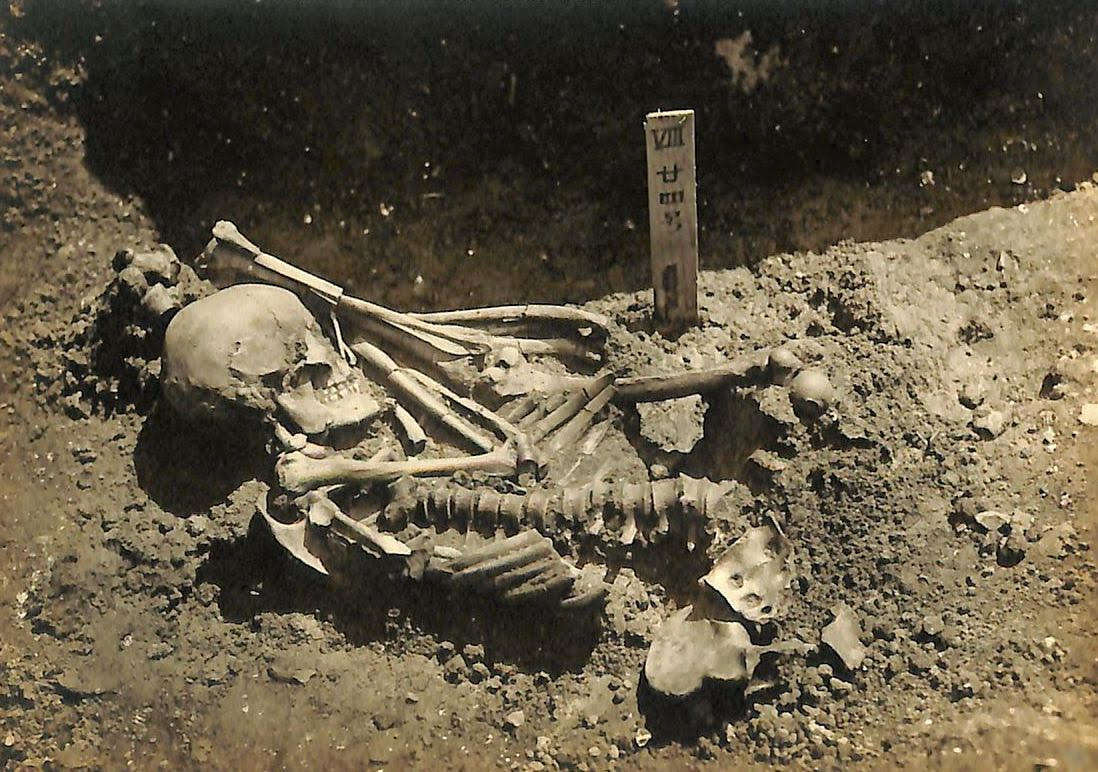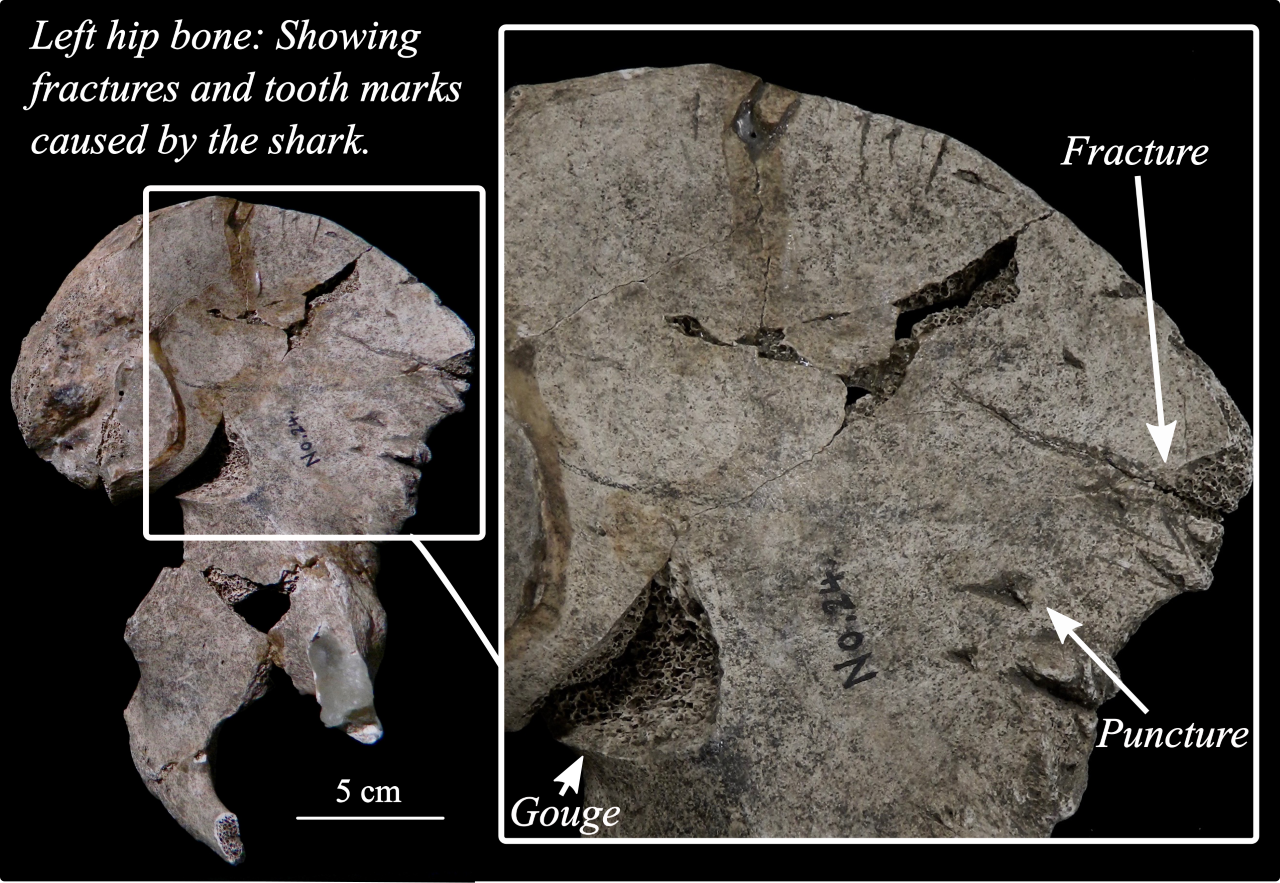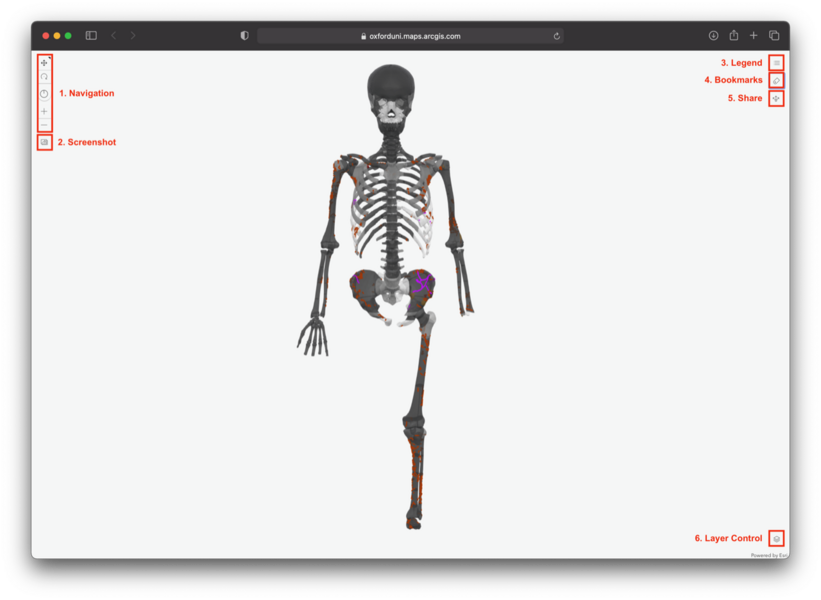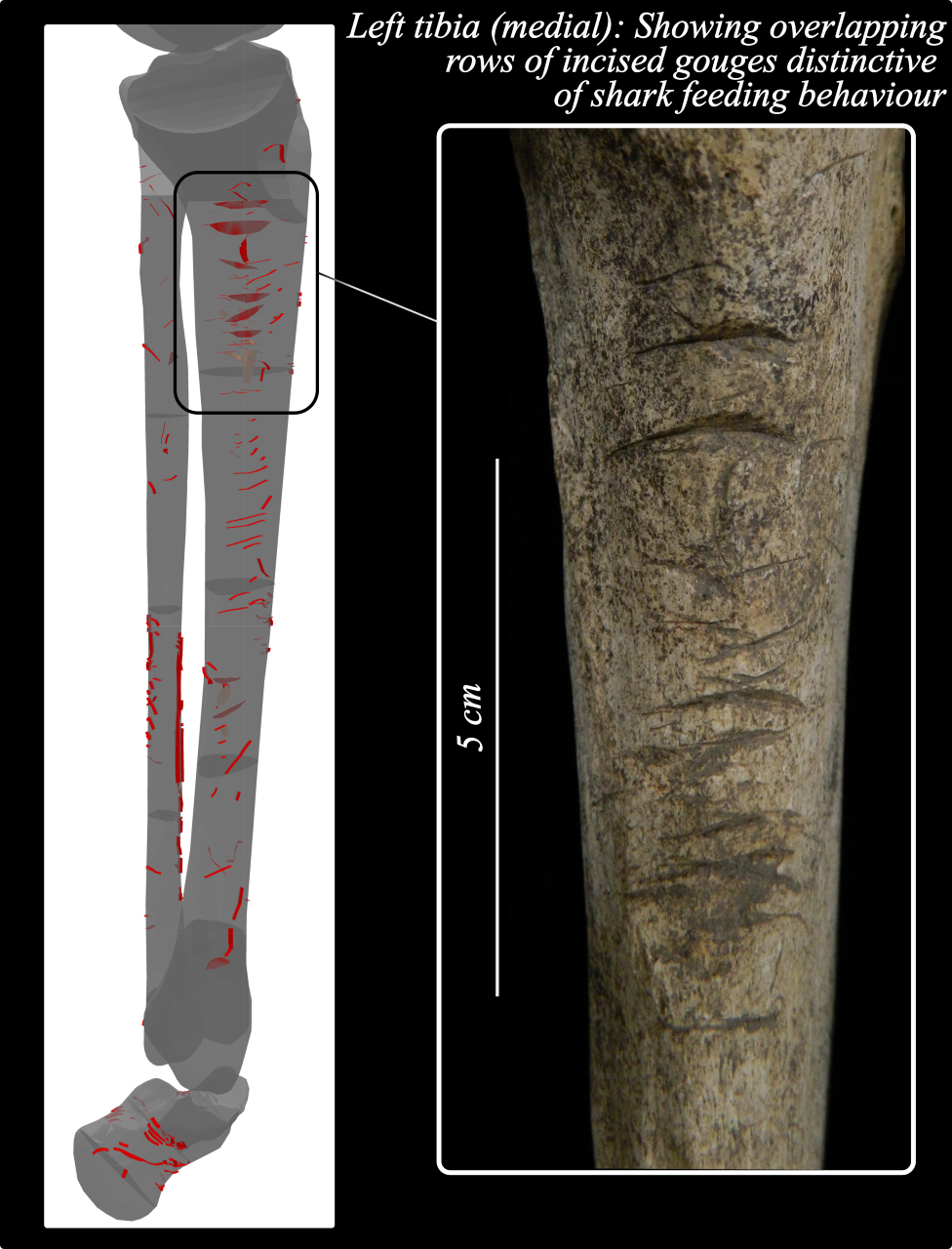Create a free profile to get unlimited access to exclusive videos, sweepstakes, and more!
A 3,000-year-old murder has finally been solved. Turns out it was the first recorded shark attack

Unsolved murder cases can go cold in weeks. This one remained cold for 3,000 years, and the perpetrator who got away with it wasn’t even human.
The skeletal remains of a Neolithic man, belonging to the Jōmon people of Japan, were unearthed by Oxford University and Kyoto University researchers in the ancient Tsukumo burial site near the coast of the Seto Insland Sea. He has now been confirmed as the oldest shark attack victim ever. His 790 traumatic lesions show he had been torn into mercilessly. So many gouges, slashes and pits on the bones tell of a grisly attack that could have involved more than one shark.
Alyssa White co-led a study, recently published in Journal of Archaeological Science: Reports, with colleagues John Pouncett and Rick Schulting, investigating the finds. They initially thought they were looking at a victim of homicide. Sharks may go after giant squid and other big bites, but they don’t usually hunt humans for food, whatever Jaws makes you want to believe.
“We became increasingly confused by and curious about the number of traumatic lesions we found,” White told SYFY WIRE. “It quickly became clear that the wounds were not consistent with stone tools used during the Jōmon period. The consistent serrated margins of the linear marks were also not common of any terrestrial predators or scavengers.”
Doing a deep dive into more examples of shark feeding patterns and bone lesions left in the wake of shark attacks confirmed that the predator was definitely a shark, either a Great White or a tiger shark. Maybe both had taken part in the feeding frenzy.
When White and her team looked into the mystery further, they finally came across an image of a bone with marks left by shark teeth. The injuries to this bone were similar to those on the skeleton of the man only known as Tsukumo no. 24. At one point, she started drawing the bones herself on recording sheets and noting observations in the margins because she had become so frustrated with how two-dimensional methods could not provide an accurate depiction of everything. Turning those notes and diagrams into 3D images made everything that much more real.
“The 3D map allowed us not only to interactively explore the injuries and relationships between bite marks on different skeletal elements, but also better understand how the variation in the depth of bite marks damaged blood vessels and soft tissue,” Pouncett also told SYFY WIRE. “We could visualize variation in the depth, width and spacing of the injuries in context.”
To further study the injuries, the scientists used a powerful combination of CT scans and GIS technology to come up with 3D images that were as accurate as holding the bones themselves. It was not possible to get away with the usual 2D methods of recording when there were this many bite marks and punctures and other lesions on the bone. Using GIS, which usually maps landscapes, allowed them to map every injury and come up with a visual for the carnage that was the aftermath of what must have been a sudden attack.
The Jōmon people were fisherman, which might explain how this tragic accident happened. If the man was fishing, a shark may have sniffed out the blood of the fish and sunk its teeth into him instead. It is especially unnerving that all the wounds were determined to be perimortem—they had been inflicted on this man before death. There are no signs of healing or injury to living bone. While the body had no time to heal from the fatal wounds before the unfortunate man met his end, the bones hadn’t yet started to degrade, either.
“Which injuries occurred while the victim was alive in our reconstruction of the attack is based on the pattern of injuries in light of known shark attack cases,” White said. “Hence, we can posit that the legs and buttocks were likely attacked first and the left hand was lost in a defensive motion.”
White believes the man had gone unconscious soon after the attack but before the shark, or sharks, went all in. The defense wound probably means that he lost his left hand in a despearate attempt to fend off the killer before he lost consciousness. His left leg, which was never found, could have been eaten, and he had probably also been eviscerated. Somehow, his people were able to recover his remains and bury them in a shell mound. The calcium carbonate in the shells is behind the impeccable preservation of the bones.
There is now a web app which lets you view the injuries in hi-res 3D (if you have the stomach to). It allowed the scientists to share their results with international colleagues. Pouncett sees it as an invaluable tool for anyone who was not able to make it to Kyoto or meet with his team in person during the pandemic.
“Although not the same as handling the bones themselves, the 3D map comes close allowing us to view the injuries from different angles,” he said.
After thousands of years, the case of who murdered Tsukumo no. 24 can finally be closed.





























